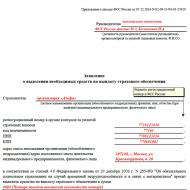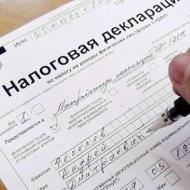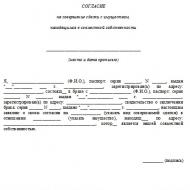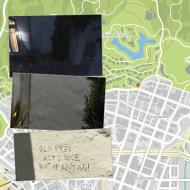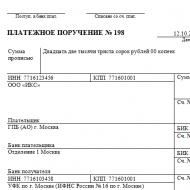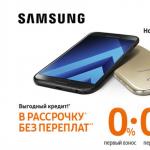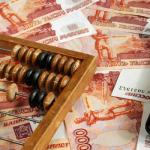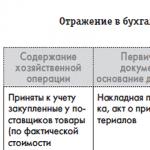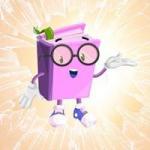
Currency of Belarus. What is money in Belarus? What does the Belarusian ruble look like?
Let us tell you what currency is currently used in Belarus and why it is called “bunnies”. Let’s take a separate look at exchangers and the current exchange rate.
Belarus has its own rubles in use. They are similar to Russian ones only in name, and even then, locals more often call them “bunnies.” Where did such a diminutive name come from, and what is remarkable about this currency? Let's start from afar.
Since 1 2016, the ISO code of the Belarusian ruble is BYN (before that it was BYR). To determine the exact exchange rate to the Russian ruble, euro or dollar, use a special calculator.
A brief background for the most meticulous
Belarusian currency relatively young. Until 1991, the country used exclusively Soviet rubles, but with the collapse of the USSR, the question arose about the need to create its own banknotes. The fact is that, compared to the rest of the countries of the Soviet Union, Belarus had the most low prices for food products, and in order to prevent their mass export by foreigners, the government introduced special coupons for goods.
At first, coupons were used along with Soviet rubles, and at the end of 1992 the country switched to payment tickets, the rate of which was equal to 10 Soviet rubles. At that time, the new national currency itself was lying on electronic accounts and waiting in the wings.
Some public figures first proposed calling the means of payment "thaler" - in honor of an old German coin. Sketches of banknotes and coins (“pennies”) were even developed. However, in the end, only the poet Nil Gilevich supported this name, while the majority spoke in favor of a more familiar name - “ Belarusian ruble"or "ruble".
From mid-1993, Soviet money gradually began to be withdrawn from circulation, and in 1994, the local ruble acquired the status of the only legal means of making payments on the territory of an independent state.
Where did those “bunnies” come from?
In order to move away from the political theme as much as possible, it was decided to use neutral images for the banknote design. Thus, various animals appeared on banknotes: bison, bear, squirrel, lynx, elk, wolves, beavers and the notorious hare, thanks to which people began to call the new money “bunnies” (hare = 1 ruble).
Animals decorated banknotes with denominations up to 100 rubles. But on larger banknotes there are images of architectural monuments.
There are no longer animals on the new banknotes (modified in 2011); instead, the images on the banknotes are dedicated to different regions of the country. Nevertheless, Belarusians still habitually call local money “bunnies”.

Denominations and modern course
The currency of Belarus has gone through difficult times. If in 1992-1994. One local ruble could be purchased for 10 Soviet rubles, but in subsequent years its exchange rate began to fall steadily under the influence of inflation.
In 1994, the Bank of Belarus carried out the first redenomination of its currency by 10 times. After 6 years, another denomination was required - this time by a factor of 1000! And on July 1, 2016, a 10,000-fold denomination took place, and for the first time coins in denominations from 1 kopeck to 2 rubles appeared in use. Previously, only commemorative coins were issued in the country.
Where is the best place to exchange Russian rubles for local ones?
Since the Belarusian ruble is a non-convertible currency, it cannot be purchased outside the republic. But within the country, any currency can be freely exchanged for national currency. This can be done at exchange offices located at airports, bus stations, hotels and large shopping centers.
A passport may be required for the exchange procedure. Receipts and checks received during the exchange should be kept: they will be required when traveling outside the country.
More than two years have passed since the redenomination; we have practically forgotten what the old money looked like, have adapted to the new size of banknotes, and have almost stopped losing coins from our pockets. As it became known today, the board of the National Bank will order additional printing of new money in the next two years.
What's happening?
Today, the National Bank announced that in 2019-2020 it will print additional banknote denominations and mint some coin denominations. Yesterday the President signed special decree No. 380. It amends the previous decree on denomination.
Why print more money?
The National Bank explains: the service life of banknotes of small denominations is short, so the number of worn-out banknotes has increased, which means they need to be replaced. 10-ruble notes suffer the most.
- Starting from October 2017, the receipt of old banknotes in denominations of 5 and 10 rubles increased by 3 and 2 times, respectively,- explains the regulator. - Since December 2017, the supply of old 20 ruble banknotes has more than doubled. As for coins, coins of small denominations, primarily 1 and 2 kopecks, are the most in demand and are not returned to the National Bank's cash desks. At the same time, their issuance from the cash desks of the National Bank is constantly growing.

The regulator notes that on average, banknotes and coins of small and medium denominations last from 1 to 3 years.
Let us remind you that the manufacturer of Belarusian banknotes is British De La Rue company. Coins were minted by two mints at once - Lithuanian and Slovakian. It took from 1 to 4 euro cents to produce one banknote and coin. It is still unknown whether these companies will print and mint Belarusian money.
It turns out that the printing press was turned on again?
No. The National Bank reassures: it regularly orders missing banknotes and coins - this is a common practice of central banks around the world. And this is done in order to provide the economy with cash.
- Additional production of cash does not mean an increase in the money supply, since its release into circulation leads to a transition Money from non-cash form in cash, since banks transfer money for received banknotes National Bank their non-cash equivalent,- adds the regulator.

Is it only our banknotes that wear out so quickly?
- In world practice, small banknotes are mostly used as change, have a short service life and therefore require constant replacement. Thus, the average service life of a 5 euro banknote is 13 months, a 1 US dollar banknote is 22 months, a 50 dollar banknote Russian rubles- 8.3 months,- the regulator provides statistics.
What specific denominations will be printed and when?
The National Bank says that in 2019 banknotes in denominations of 5 and 10 rubles will be printed, and in 2020 we will see new twenties and fifties.

How will the new money change?
The regulator wants the new banknotes to look a little different. Firstly, the images on the front sides of the banknotes will change and their names will be signed.
- Images of architectural structures will be brought into line with the current ones appearance, - reports the regulator.
Let us remind you that on the banknote of five rubles the Kamenets Tower is depicted, on the 10-ruble note - the Polotsk Transfiguration Church, on the twenty-ruble note - the palace of the Rumyantsevs and Paskevichs, and on the fifty-ruble note - the Mir Castle.




Also, on the new banknotes there will no longer be the details of “Elder of the Rule” and a facsimile signature former chairman reign of Pyotr Petrovich Prokopovich. An era is passing. - concludes the regulator.
What about old money?
- 2009 banknotes will remain legal tender,- says the National Bank and promises to describe in detail all their nuances and features before introducing new banknotes into circulation.
Let us remind you that there are currently 7 denominations of banknotes in circulation - 5, 10, 20, 50, 100, 200, 500 rubles and 8 denominations of coins - 1, 2, 5, 10, 20 and 50 kopecks, as well as 1 and 2 Belarusian rubles.
For the second time in the history of the country's independence, denomination was announced, and, consequently, new money was introduced into circulation. In Belarus, which is already accustomed to living in a world of millionaires, such changes have created a real sensation. Even six months after the announcement of the denomination, when the old money should finally be withdrawn from circulation, many continue to count as they have become accustomed to for many years. So, what are they new?
What changed?
Let's start with the fact that samples of new money in Belarus were developed long before their introduction into circulation - the bills themselves were already printed in 2009 and locked in secure storage facilities. As part of the denomination, four zeros were cut off, that is, if in old banknotes the minimum denomination was one hundred rubles, now it is one kopeck.
For Belarusians who had not previously used coins, such innovations came as a not very pleasant surprise: not only did they have to change wallets (after all, old wallets had no special compartments), but also automatic machines, ATMs and other machines that previously accepted even the most small bills, not reconfigured for pennies. It is also worth noting that even the acquisition of new wallets did not help people adapt to the new money, but more on that later.
Design
Yes, the new money in Belarus, unlike the old ones, is more reminiscent of European than Soviet. Moreover, denominated rubles (that’s what they called it in the country) new currency at a time when it still coexisted with old money) were even criticized for being too similar to the euro.

A separate advantage was that Belarus retained the concept of depicting historical buildings on new banknotes, although now with a reduction in the number of denominations paper money, some attractions had to be abandoned. Each region of the republic is immortalized on the banknotes, and not only well-known places were chosen as symbols, but also those whose image evokes positive associations among Belarusians.
Unaccepted projects
Of course, there were also those who wanted to see the new money in Belarus completely different. Photo possible options bills appeared on the Internet even a year before the redenomination. Many suggested putting famous Belarusians in the portraits; however, they differed on who exactly was worthy of representing the country at its banknotes: some turned to the fighters for Belarusian statehood, others - to the rulers different eras, still others - to figures of science and art.
Another interesting concept that never came to fruition was using images of antique household items and jewelry to remind people of their roots. The third option proposed reorienting the bills, that is, making them not the usual horizontal, but vertical, in the manner of Israeli or Swiss monetary units. The most radical of all proposed is the renaming of the currency to the thaler, in the manner of the currency of the Grand Duchy of Lithuania, with the image on the banknotes of people who gave their lives for the sovereignty of the state.

Protection system
Before it was released into circulation, no one could say what the new money would be like in Belarus. It was known that new security technologies were used in their production, which would make counterfeiting almost impossible. The banknotes contained special signs in the form of geometric shapes, by which visually impaired people could recognize the denominations. In addition, a special method of strengthening the corners was used, thanks to which the bills will be more resistant to abrasion, which could not be said about old-style money. Another difference is the change in the design: in the light, not abstract patterns are visible, but the building depicted on the banknote. The traditional thing that has been preserved in the way the new money of Belarus looks is the following: stitching with a special tape with the embossed abbreviation NBRB (National Bank of the Republic of Belarus). This is also aimed at improving the security of banknotes against counterfeiting.
Coins
But the most anticipated and anticipated coins in Belarus are coins. Eight denominations were issued - 1, 2, 5, 10, 20, 50 kopecks, 1 and 2 rubles. Coins can be divided into three groups: red (the smallest, the ornament applied to them is a sign of wealth and prosperity), yellow (10-50 kopecks with an ornament symbolizing vitality) and silver (to be more precise, ruble coin completely silver, and two-ruble - silver with a wide gold edging; applied ornaments denote freedom and will).

At the same time, despite the originality and unusualness, even today, six months after the introduction of the new coins, it is difficult to say what these samples of the new money of Belarus will look like in five to ten years. The fact is that coins of small denominations are made so poorly that it is difficult for a young person to see what is written on them, let alone someone who has poor eyesight. In addition, denominations wear off very quickly, and small coins themselves are subject to corrosion. As for the two-ruble coins, which the republic is so proud of, it turned out that when not very much force is applied, the coin easily breaks into two component parts - all this clearly does not contribute to the popularization of new money among the population.
Consequences
Yes, the time has already passed when people wondered what the new money would be like in Belarus. Photos of price tags that did not have the usual zeros, incomprehensible at first conversions between old and new money that baffled even those who are good at mathematics - all this has already subsided.

From January 1, 2017, six months after the official introduction of banknotes of the 2009 model into circulation (which is why the adjective “new” sounds so paradoxical next to them), the use of old money ceases and its withdrawal begins. The population is given another five years to completely get rid of outdated monetary units and finally get used to what the new money of Belarus looks like.
Attempts to understand
What changed when new money appeared in Belarus? Photos of banknotes immediately after the denomination flooded the Internet, causing the country to be hit with a barrage of jokes about long-forgotten banknotes with images of animals, popularly nicknamed “bunnies” (they were in use in the mid-nineties).
Has the financial well-being of the population changed? No, on the contrary, from a country of millionaires, Belarus has turned into a country where a person can receive his entire salary in a few bills.

When there were conversations about what new money would be in Belarus, a photo of a bill whose denomination was equivalent to 50 dollars was surprising, let alone the bills equal to 100 and 250 dollars (however, it should be noted that the latter are not available to the general public). For people who are accustomed to the fact that “two rubles” (which is what 2,000 old rubles used to be called) is a tenth of a dollar, now the stable “dollar - two rubles” sounds a little reassuring. In addition, due to confusion with prices (especially during the period when it was possible to pay and receive change using both new and old money), the state was able to increase them without the population noticing. It’s easier to say that the new money in Belarus, despite the fact that it was pleasing to the eye, brought more difficulties and problems. Or perhaps this is all a temporary phenomenon that will disappear when the state finally gets rid of old money in its consciousness.
P.S.
Today we already know the answer to the question of what new money will be in Belarus. All that remains is to understand whether they will bring the country the very benefit that those who produced them advocated for.
14.5 € (34.2 Belarusian rubles / 988.5 ₽) – minimum budget for the dayin Minsk 🇧🇾. This is enough for a good budget hostel, two trips on public transport and food (the amount is equal to two lunches in inexpensive cafes).
This amount does not include the cost of flights and insurance. A direct round-trip flight from Moscow will cost 5-6 thousand rubles (and sometimes cheaper if you get to a Belavia promotion). A little cheaper during sales (subscribe to the telegram channel @samokatus so as not to miss them).
Screenshot from the telegram channel @samokatus
Insurance can be selected on the service. Cherekhapa - Aviasales in the world of insurance, selects from dozens of options the cheapest or most suitable in terms of parameters. Cherekhapa is our partner, and we recommend it as the best insurance aggregator.
From Minsk Airport you can get to the center in the following ways:
- Bus No. 300e or minibus No. 1400-TK takes just under an hour to get to the Central bus station. A ticket costs 4 rubles (115.7 RUR).
- By train. It takes 56 minutes, but only runs a few times a day. Check the train schedule on the BC website. Another inconvenience is that a free shuttle will take you from the railway station to the airport (the ride is about 1.5 km). A ticket costs 2.5 rubles (723.0 RUR).
- By taxi a trip to the center of Minsk will cost approximately 30-40 rubles (867.6–1,156.9 rubles).
- Private transfer(price from 23 €) can be ordered on the website and.
How to get around the city?
How much does public transport cost?
How much does a taxi cost?
Taxi prices in Minsk depend on the carrier company. The boarding price is 3-5 rubles (86.8–144.6 rubles), and the average kilometer journey is 70 kopecks (20.2 rubles).
An inexpensive way to get around Minsk is Uber and Yandex.Taxi, working together. The landing fee (including 3 kilometers) will be 3.35 rubles (96.9 rubles), and a kilometer of travel costs 41 kopecks (11.9 rubles).
Bolt came to Minsk relatively recently. Get a discount on your first trip by downloading the app.
How much does gas and parking cost?
A liter of 92 gasoline in Minsk costs on average 1.52 rubles (44.0 ₽). In paid parking zones, an hour costs about 1 ruble (28.9 RUR).
Renting a bicycle will cost 5 rubles (144.6 RUR) per hour or 15-20 rubles (433.8–578.4 RUR) per day (for example, velotrek.by).
You can rent an electric scooter in Minsk using the Eleven application - 2 rubles (57.8 ₽) at the start of the trip and 0.2 rubles (5.8 ₽) for every minute.
How much does housing cost in Minsk?
Hotels: in inexpensive guest houses, prices for double rooms start from 15-20 €, depending on the season (for example, Guest House Crocus, Pobeda or Tulip). At this price you can also find apartments near the center.
In a three-star hotel, room prices start from 30-35 € (for example, Olimpiyskiy, Orbita or Aqua-Minsk Hotel), usually these options are further from the center, but with good ratings. A room in a three-star hotel closer to the center with good ratings will cost from 45-50 € (for example, Yubileiny, Planet or Garni).
In a four-star hotel - from 65-70 € (for example, Gubernsky or the Minsk hotel).
For fans of chain hotels in Minsk there are (sorted from cheapest to most expensive):
- Hampton by Hilton - from 70 €, 3 stars
- Renaissance Minsk Hotel (Marriott chain) - from 80 €, 5 stars
- Crowne Plaza Minsk Hotel (IHG chain) - from 90 €, 5 stars
- Minsk Marriott Hotel - from 100 €, 5 stars
- DoubleTree by Hilton - from 100 €, 5 stars
Hostels: prices for a place in a dormitory room start from 6-8 €, but many hostels are far from the center. In the off-season, for 7 € you can stay in the centrally located Stary Minsk hostel (9.2/10) or the K&C hostel, a little further from the center. A double room in a hostel will cost 15-20 €.
AirBnb: nice apartment in the center of Minsk you can rent for 20-25 €. If you book in advance and are lucky, you can find a room for 9-12 €, but most options cost from 15 € and above.
If you don't have an AirBnb account, you can get €36 off your first booking by signing up using this link.
Thus, good budget accommodation in Minsk will cost you 6-10 € per night per person.
How much does the connection cost?
An unlimited tariff will cost approximately 8.5 rubles per month (245.8 ₽) from MTS or 7 rubles (202.4 ₽) from Life.
A way to save on communications is to order a SIM card for travelers DrimSim in Russia. Why we like Drimsim:
- cheap internet. ~10 € per 1 GB in many countries of the world (with the exception of third world countries rarely visited by tourists)
- The SIM card will work already on the plane: you can immediately order a taxi or write to the host.
- Billing is based on megabytes, i.e. for 100 MB you will pay ~1 €. If you are traveling to a country with inexpensive internet for more than 3-4 days, you should buy a local SIM card; if less, then you should take a closer look at a travel SIM card.
Delivery of the card costs 10€, and by ordering it using this link you will receive 7€ as a gift to your account. Minimum amount Drimsim top-up 25€. Please take this into account.
In Belarus, 1 GB of Internet at Dreamsim costs 10 €
How much does food cost in restaurants?
- a cup of cappuccino 4 rubles (115.7 ₽). For example, in Grain. A selection of coffee shops from 34travel.
- glass of beer 5 rubles (144.6 ₽). For example, Clever Irish Pub. Selections of bars from Kaktutjit: and.
How much do groceries cost in the supermarket?
Prices in Minsk for food in supermarkets are 14% cheaper than in Moscow. Dairy products, vegetables, fruits, and some types of meat are much cheaper. It is profitable to buy products in hypermarkets or at the Komarovsky market.
How much does entertainment cost?
There are several free tours in Minsk with different frequencies: every day or once a week. If you are willing to pay for an interesting excursion, options can be found on the website.
A bus excursion lasting 1 hour 40 minutes will cost 30 rubles (867.6 RUR). A yacht trip will cost 140 rubles (4,049.0 RUR)
A visit to the miniature museum “Mini Country” will cost 15 rubles (433.8 ₽), and the interactive center “Quantum” - 13 rubles (376.0 ₽) on weekdays or 16 rubles (462.7 ₽) on weekends.
How much do souvenirs cost?
Prices for souvenirs are approximately as follows:
- Basic souvenirs: postcards 0.5 €, magnets 1-2 €, mugs 3 €, T-shirts 5 €.
- Special souvenirs: cosmetic products from 1€ and above depending on the type, linen products from 3€.
What do they bring from Belarus?
- I'm on my way! For example, condensed milk and stewed meat. Or cranberries in sugar.
- Linen products: tablecloth, towel or shirt

Cool designer souvenirs can be bought in the store “Vyaliki dzyakui!” ( Oktyabrskaya 23A)
Flea markets in Minsk
The most famous flea market in Minsk is the so-called “Field of Miracles” market. On a vast territory, they sell almost everything: from twenty-year-old posters from the magazine “Hammer” to auto parts and relics of the Second World War.
All this splendor is spread out on the street. Timiryazeva, 123 (Tsimirazeva, 123, if you like) and is open from Tuesday to Sunday in the morning.
Museums of Minsk
Prices in Minsk for entrance tickets to museums vary greatly.
- Museum of the History of Minsk – 4 rubles (115.7 ₽)
Information about the denomination shook Belarusians in earnest. Last year, the country went through elections and devaluation, but the key event will be the denomination, which will make the Belarusian ruble “poorer” by four digits. Starting on July 1 of this year, the Belarusian authorities decided to... One of the smallest denominations of one hundred rubles will be replaced with a new one, which is equal to one kopeck. According to the new currency rules they will calculate salaries, pension, scholarship, money in banks, and savings of departments and companies. The motivation for reform will be improvements money turnover, simplicity in calculating indicators, a significant reduction in the state’s expenditure on the issue of currency. The denomination is not expected to affect the price national currency and inflation rate.
Background to the denomination in Belarus in 2017
By denomination we mean a process in which old-style monetary units slowly leave the circulation and are replaced by new ones, the denomination of which is an order of magnitude smaller. This is not the first time for Belarusians; in five years the country has experienced the same number of devaluations and this news cannot be called a surprise. But there are still small threats from this measure. Economists are confident that the value of the local ruble will not “shake” because the task is very simple, simply reduce the number of digits of the currency and not damage its purchasing value. But innovation was brewing, because the list of the most devalued monetary units in the world could not do without Belarus. It was wild for everyone that in this country there are seventeen to eighteen thousand, and everyone is essentially a millionaire who “chic” on essential products. To buy an apartment without special amenities, you need to shell out billions of local rubles. Of course the government must intervene.
The main idea of the event will be the ratio of the Belarusian ruble to the Russian one, namely to make it equal. There will no longer be a need to pay hundreds of billions for a good car. The new banknotes will be at the same level as the current ones, one in ten, that is, one ruble is the same as ten thousand today. IN State Bank have already shown what the new currency will look like, with a denomination identical to the Russian one. The banknotes were prepared six years ago.
Stages of ruble denomination in Belarus
Denomination in Belarus starts on the first of July this year. Before last day In 2016, banknotes of the 2000 and 2009 type will remain the only ones in circulation. To simplify the situation, the price of one denomination and the other will be indicated. For five years until the end of 2021, it will be possible to exchange any currency without commission. The exchange of old monetary units can be carried out from January next year until the end of 2019 in the National Bank and other banking and financial system in the country. From two thousand and twenty-two, the monetary units of the year two thousand will lose their legal capacity.
Starting in July, the issue of seven types of rubles will begin, namely:
- five;
- ten;
- twenty;
- fifty;
- two hundred;
- five hundred.
The style of banknotes will be displayed in the national color, namely in the form of architecture. Each unit will have a separate mention of the regions of the country and the capital. The ratio of the region to the nominal value is determined by the alphabet. On the return routes you will be able to see a reproduction of the history and culture of a particular region of the country. The colors of all banknotes are different, small ones have light shades, larger denominations have more restrained tones. The main difference will be the size of the bills; the new ones will be larger. Also, from the first of July, for the first time in modern Belarus, metal coins with denominations of one, two, five, ten, twenty and fifty kopecks, as well as one and two rubles, will go into circulation. The measure is very reasonable since small denominations of the old type are used as circulation ones, which leads to their wear and tear and the National Bank spends a lot of money on their production. Plus, coins will “live” longer than paper money. On the sides of the coin there will be the national Coat of Arms and a reproduction of the weavers' work.
New banknotes in Belarus in 2017 will have clear security. Coins in denominations from a kopeck to five will be red, from ten to fifty kopecks yellow, a ruble white, two rubles of mixed colors, namely yellow and white. Banknotes must be equipped with security properties.
To understand whether you have got a fake, you need to take into account factors such as:
- touching the banknote;
- tilt of the bill;
- transillumination;
- determination using a special device.
When touching the banknote you need to take into account:
- structural component;
- enlarged main image;
- notes for the visually impaired population;
- text on the banknote.
When the banknote is tilted, you can notice a special hidden sign in the form of the letters RB. It can be seen on the denominations of all new monetary units. Cashiers and banks need to rely on special devices that can easily distinguish the real from the fake.
Recalculation due to redenomination in 2017
All price tags will be changed from July 1st according to new calculation rules, according to a denomination coefficient of ten thousand to one. For example, if the cost of a product was ten thousand rubles, then its new price will be ten rubles. Thus, there is no need to worry about the stability of the currency, because the inflation rate will remain identical. To all manufacturers, sellers, etc. when forming the cost of a product, be sure to indicate it in the monetary unit of the example of two thousand and two thousand and nine. From July salary pension payments and all social standards will be calculated on the basis of the denomination. The banking system will also recalculate all funds, as well as customer savings, in a new format. For example, if the card contained a million in local currency, then from the first day on it there will be an amount of one hundred rubles. The same situation will happen with all citizen loans and deposits; they will also be calculated in a new way. Bank card bills will be expressed in denominated value. Also, if profit reporting needs to be submitted to the tax office after the first of July, then this must be done taking into account the denomination of the ruble in Belarus, regardless of the period for which it was accrued. In all reporting related to tax system From the first number new numbers will be displayed.
Expectations from the ruble denomination in 2017
At the time the government announced the planned measure, the population thought about the possible threats associated with the denomination of the national monetary unit. Every reform concerns people's living standards. Analysts unanimously reassure that citizens will not lose anything from the innovation, since the denomination of the currency will simply decrease. However, there are those who believe in the possibility of accelerating the inflation process in connection with the adopted law. The Ministry of Trade warned that any speculation on prices in connection with the denomination is unacceptable and prohibited, but it is still unknown whether entrepreneurs will take this information into account.
People who are afraid for their loans also have nothing to fear. The denomination will in no way affect the ability to borrow funds, credit interest etc. As a rule, in the loan agreement all this should be written “in black and white,” but even if there is not a word about this in the documents, there is no reason to worry. The denomination process is a government undertaking, that is, everything is strictly prescribed by law and any violation will incur liability and no one banking system will not affect rules and regulations.
However, the devaluation of the national currency was an unexpected event in expert circles. There are no questions about the appropriateness of the procedure, but whether this process was launched on time is a matter of slight controversy. Analysts say that the denomination in the country speaks of high level stability of the domestic banknote and the authorities completely exclude the possibility of a new devaluation. However, we can discuss this topic for a long time, but it is easier to wait until July and look at the state of affairs de jure, and not de facto.
Denomination will not increase the inflation rate in 2017
The dark side of the ruble denomination in 2017
Pessimistic experts believe that the process of denomination of the domestic currency will entail a number of problems, including the use bank cards and crowds of people near shops. Also, there are many who have a positive attitude. The country had been planning this process for a long time, but due to the depreciation of the local ruble, plans changed. People who were born in an independent country for the first time will have a chance to collect “change” in the form of coins. The denomination did not bypass Belarus twice, in 1994 and 2000. The encoding of the domestic currency will also change, and the Ministry of Finance has given instructions not to change the programming in cash registers Until the end of the year, in view of this, people will still receive checks worth millions.
Experts ask people who go on business trips to ask for reliable data everywhere, that the check price and the real one have a difference due to the old programming of the system. Otherwise, this will cause confusion in accounting and reporting. You can’t envy accountants; many try to “knock out” the treasured vacation pay as quickly as possible in order to avoid all the confusion in the calculations. Overall, today's process is of better quality than the previous one sixteen years ago. legal entities re-registered. Today we may encounter something similar joint stock companies, many need to check the figures regarding the price of all valuable papers. Some departments were ahead of the curve and, for example, the Ministry of Labor does not ask employers to re-conclude contracts with employees due to changes in amounts. However, entrepreneurs still have a lot of dilemmas to which they do not find answers, expressing confidence that there are a lot of hectic moments ahead.
Such moments in connection with the denomination of the ruble in Belarus are already happening at the present time. Confusion will affect not only locals, but also visitors. There are already two price tags on store shelves, one at the old price, the other at the new price. Matches, for example, are now valued at four hundred rubles, but will cost four kopecks, which is equal to two euro cents and a little more than one ruble per Russian currency. Many buyers do not understand what monetary unit prices are in, and they resort to the help of money exchangers. The National Bank explains that denomination occurs by default and money can be exchanged in every bank until 2022.
It will not be easy for tourists, because the simultaneous circulation of two monetary units entails confusion. Many guests are already scared when they are presented with a bill of several millions, and the new calculation will only complicate the situation. Such nuances are unlikely to scare off the flow of guests, but they will cause unnecessary inconvenience.
Experts complain that problems with ATMs and bank card payments are expected from July 1st. In Internet systems, no particular confusion is expected, only in the case of replenishing cards, fuss is possible. Non-cash payments will work without problems, but in the case of card payments, transactions and cash withdrawals, difficulties are likely to be expected. Experts believe that many cashiers will also have a very difficult time and will not be able to work at a fast pace. Other experts believe that the difficulties will be temporary and all incomprehensible issues will be corrected very quickly. The only thing is that it is better for guests of the country to take extra funds with them in order to avoid all the fuss associated with their exchange.
In general, the denomination in Belarus in 2017 will not affect the stability of the local currency and the inflation level. Belarusians will pay for everything as much as they paid, with the only difference being the denomination of the banknotes. Citizens will face minor difficulties associated with the double circulation of the monetary unit, but it is expected that the population will quickly get used to the innovation and appreciate it in the future, because paying a million rubles for just one trip to the supermarket is definitely too much.

